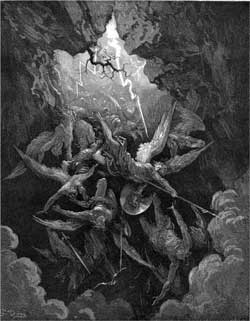
The idea of a rebel force that defies a deity has been a topic of great fascination for authors and poets for millennia. There are stories in various traditions that describe how some of the divine beings sinned against their creator and corrupted humanity in the process. In this article, we will focus on two versions of the fallen angels myth in the Judeo-Christian tradition and examine their origins, meanings, and implications.
The Watchers: The Angels Who Lusted After Women
The first version of the fallen angels myth involves a group of angels who, led by Azazel, lusted after the women of Earth. These “watchers” descended to earth and took them as wives, producing offspring that were giants and wicked. God was displeased with this rebellion and punished the angels and their progeny, but not before humanity was tainted by their influence.
This version of the myth is briefly introduced in Genesis 6:1-4, where it is said that “the sons of God came into the daughters of men, and they bore children to them”. However, the biblical text does not explicitly condemn this act or identify the sons of God as angels.
The myth is elaborated in more detail in the Book of Enoch, a Jewish apocalyptic work that is not part of the biblical canon. The Book of Enoch names the leader of the fallen angels as Azazel and describes how he taught humans various arts of civilization, such as metallurgy, cosmetics, astrology, and magic. The Book of Enoch also depicts the judgment of God on the fallen angels and their offspring, who are destroyed by a great flood.
The purpose of this version of the myth is to provide a mythological explanation for the origin of evil and violence in human history. It also reflects a worldview that sees human culture as corrupted by demonic influences and divine intervention as necessary for salvation.
Mesopotamian Influences on the Watchers/Fallen Angels Myth
Many scholars have suggested that the origin of this myth can be traced back to the ancient Near Eastern cultures, especially Mesopotamia, where similar stories of divine beings who descended to earth and mingled with humans are found. Some of the possible Mesopotamian influences on the fallen angels myth are:
- The Apkallu: The Apkallu were seven sages who were sent by the god Ea to teach civilization to humanity before the flood. They were depicted as half-human and half-fish or bird, and were associated with wisdom, magic, and culture. Some of them were also called “sons of Ea”. Some scholars have argued that the Apkallu may have inspired the idea of the “sons of God” who imparted knowledge to humans in Genesis 6:1-4.
- The Anunnaki: The Anunnaki were a group of gods who ruled over the earth and the underworld. They were often involved in conflicts and power struggles among themselves and with other gods. Some of them were also said to have sexual relations with humans and produce offspring. Some scholars have suggested that the Anunnaki may have influenced the concept of fallen angels who rebelled against God and corrupted humanity.
- The Igigi: The Igigi were a class of lesser gods who served the Anunnaki. They were sometimes portrayed as workers who rebelled against their masters and demanded rest. They were also said to have descended to earth and taken human wives, resulting in hybrid children. Some scholars have proposed that the Igigi may have contributed to the image of fallen angels who defied God’s authority and intermarried with humans
These are some of the possible ways that Mesopotamian mythology may have shaped the development of the fallen angels myth in Jewish and Christian traditions. However, it is important to note that these influences are not direct or simple, but rather complex and mediated by various cultural, historical, and theological factors. Moreover, there are also significant differences and variations between the Mesopotamian and biblical accounts, which reflect their distinct worldviews and perspectives. Therefore, while recognizing the Mesopotamian background of some aspects of the fallen angels myth, one should also appreciate its originality and creativity within its own context.
Lucifer: The Angel Who Rebelled Against God
The second version of the fallen angels myth involves the mightiest angel who, out of pride, rebelled against God during the time of creation. This angel, known as Lucifer or Satan, sought to overthrow God and take his place, but he failed and was cast out of heaven along with his followers. Then, out of spite for humanity, he tempted Adam and Eve to sin in the Garden of Eden.
This version of the myth is based on a possible interpretation of Isaiah 14:12-15, where it is said that
“How you are fallen from heaven, O Day Star, son of Dawn! … You said in your heart, ‘I will ascend to heaven; above the stars of God I will set my throne on high; … I will make myself like the Most High.’ But you are brought down to Sheol, to the depths of the Pit.”
– Isaiah 14:12-15
Some scholars suggest that this passage refers to a Canaanite myth about a rebellion against El and Elyon, two names for the supreme god in that culture. However, later Jewish and Christian traditions applied this passage to Satan, the adversary of God and humanity.
The purpose of this version of the myth is to provide a mythological explanation for the origin of sin and suffering in human existence. It also reflects a worldview that sees human nature as fallen from grace and divine grace as necessary for redemption.
The Serpent and Satan: A Later Identification
The Genesis story of the fall of Adam and Eve does not explicitly identify the serpent who tempted Eve with Satan, the adversary of God. In fact, the Hebrew word for serpent, nahash, is never used as a proper name for Satan in the Hebrew Bible. The serpent is simply described as “more crafty than any other wild animal that the Lord God had made” (Gen 3:1), and is later cursed by God to crawl on its belly and eat dust (Gen 3:14). The serpent is not portrayed as a fallen angel or a demonic being, but rather as a natural creature who acts as an agent of chaos and deception.
The identification of the serpent with Satan is a later development that emerged in the intertestamental and early Christian literature, possibly influenced by Persian dualism and Greek mythology. Some of the texts that make this connection are:
- The Life of Adam and Eve: This is a pseudepigraphical work that dates from the first century CE. It expands on the story of Adam and Eve after their expulsion from Eden, and includes some dialogues between them and the serpent. The serpent reveals that he was once an angel named Satanail, who was jealous of Adam’s position as God’s image-bearer and decided to rebel against God with his followers. He was then cast out of heaven and became a serpent, and he sought to deceive Adam and Eve in order to make them sin and lose their glory. Satanail is clearly identified with Satan, and his story reflects the influence of Isaiah 14:12-15 and Ezekiel 28:11-19, which were later interpreted as describing the fall of Satan as a prideful angel.
- The Greek Sources: Some scholars have suggested that the identification of the serpent with Satan may have also been influenced by some Greek sources, such as the myth of Typhon, a monstrous serpent who challenged Zeus for the rule of the cosmos, or the story of Python, a dragon who guarded the oracle at Delphi until he was slain by Apollo. These sources may have provided some motifs or images for depicting the serpent as a cosmic enemy or a rival deity.
The identification of the serpent with Satan was further developed and popularized by some of the early church fathers, especially Augustine of Hippo (354-430 CE), who wrote extensively on the nature and origin of evil in his works such as The City of God and On Christian Doctrine.
Augustine argued that evil is not a substance or a principle, but rather a privation or a corruption of good. He also maintained that evil is not caused by God, but by the free will of rational creatures who choose to turn away from God. He applied this view to explain the fall of both angels and humans, and he identified Satan as the leader of the fallen angels who seduced Eve through the serpent in Eden. He also held that all humans are born with original sin, which is inherited from Adam and Eve through sexual reproduction, and that only through Christ’s grace can they be saved from eternal damnation.
Augustine’s interpretation of Genesis 3 had a lasting impact on Western theology and culture, and it reinforced the association between the serpent and Satan in Christian tradition.
Conclusion
The fallen angels myths are examples of how humans have tried to make sense of the problem of evil in their religious traditions. They offer different perspectives on how evil came into being and how it affects human destiny. They also raise questions about the nature and role of free will, justice, mercy, and redemption in relation to the divine plan
Reference
- Bamberger, Bernard. Fallen Angels: The Soldiers of Satan’s Realm. Jewish Publication Society, 1952. Barnes & Noble Books, 1995.
- Collins, John J., Introduction to the Hebrew Bible: Third Edition. United States, 2018.
- Forsyth, Neil. The Old Enemy: Satan and the Combat Myth. 1. Princeton paperback print, Princeton Univ. Press, 1989.
- Harkins, Angela Kim, et al., editors. The Watchers in Jewish and Christian Traditions. Fortress Press, 2014.
- Ogden, Daniel. Dragons, Serpents, and Slayers in the Classical and Early Christian Worlds: A Sourcebook. Oxford University Press, 2013.
- Pagels, Elaine H. Adam, Eve, and the Serpent. 1st Vintage Books ed, Vintage Books, 1989.
- Reed, Annette Yoshiko. Fallen Angels and the History of Judaism and Christianity: The Reception of Enochic Literature. Cambridge University Press, 2005.
- Stuckenbruck, Loren. The Myth of Rebellious Angels: Ethics and Theological Anthropology. Edited by Matthias Konradt and Esther Schläpfer, Mohr Siebeck, 2014.
- Wright, Archie T. The Origin of Evil Spirits: The Reception of Genesis 6:1-4 in Early Jewish Literature. Fortress Press. 2015.

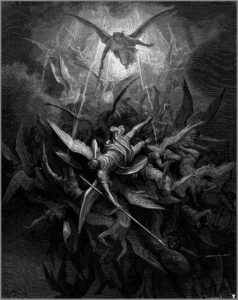
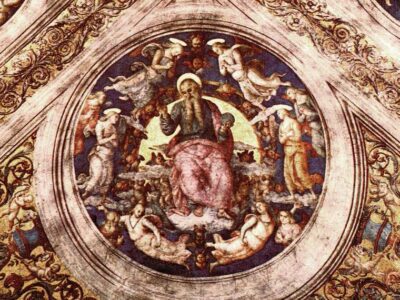
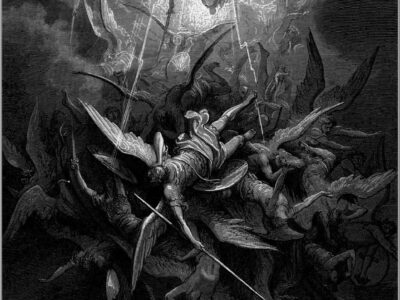
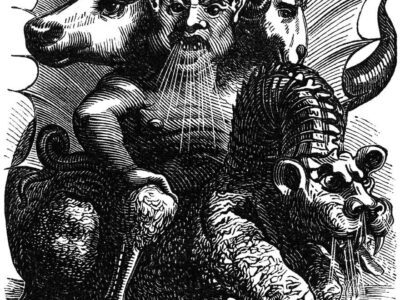
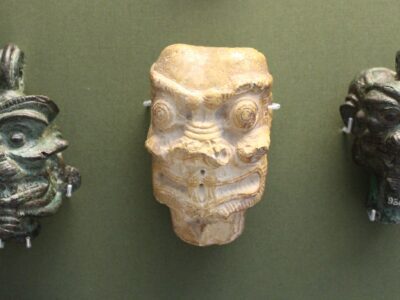
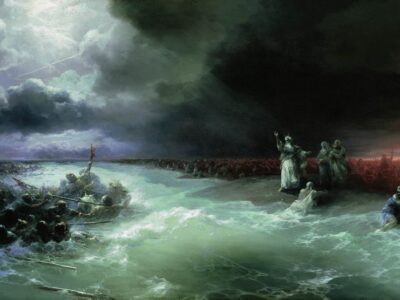
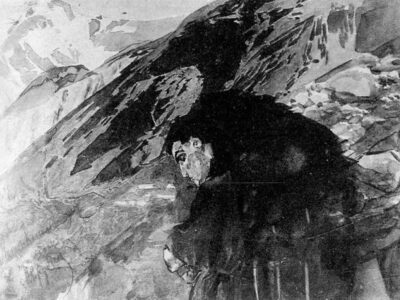
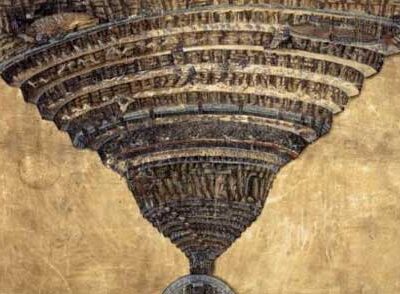
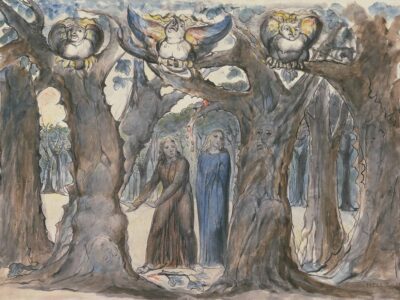
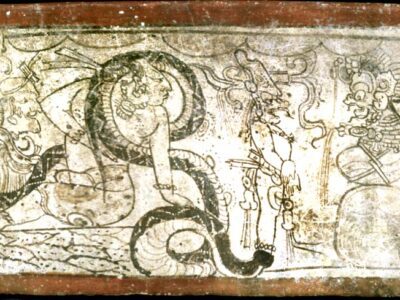
 Asmodeus: The Demon of Lust and Wrath
Asmodeus: The Demon of Lust and Wrath